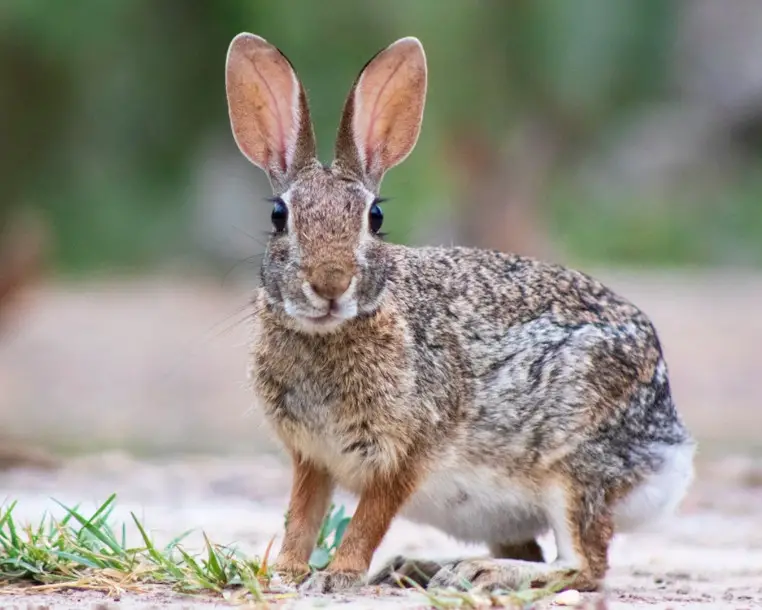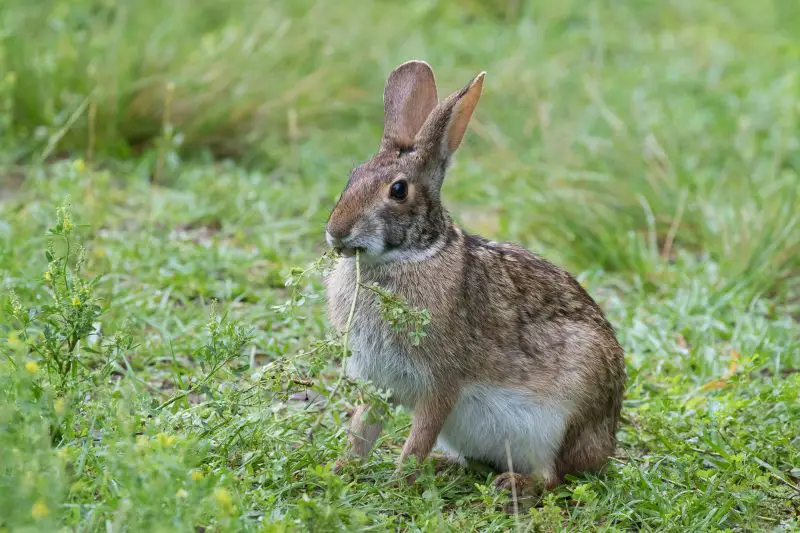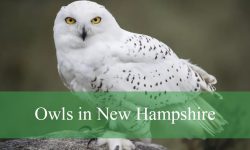Rabbits are among the most familiar and beloved wildlife species found throughout Mississippi. Their twitching noses, soft fur, and alert postures make them a favorite sight for nature enthusiasts and hunters alike. In Mississippi, there are two primary species of wild rabbits—the Eastern Cottontail and the Swamp Rabbit. Both species play vital roles in the state’s ecosystems and can be found across different habitats, from pine forests and farmland edges to wetlands and river bottoms.
This comprehensive guide will help you identify each wild rabbit species in Mississippi, understand their habitats, behaviors, diets, and seasonal patterns, along with detailed identification features and pictures for reference.
Overview of Wild Rabbits in Mississippi
Rabbits are small to medium-sized mammals belonging to the genus Sylvilagus, which includes cottontails and swamp rabbits in North America. They are known for their exceptional reproductive rate, keen senses, and adaptability to diverse environments.
In Mississippi, both wild rabbit species—the Eastern Cottontail (Sylvilagus floridanus) and the Swamp Rabbit (Sylvilagus aquaticus)—are native and have distinct ecological preferences. These rabbits are important prey for numerous predators, including hawks, foxes, coyotes, and snakes. At the same time, they serve as an essential game species, contributing to the state’s hunting culture and conservation programs.
Eastern Cottontail (Sylvilagus floridanus)

Description and Identification
The Eastern Cottontail is the most widespread rabbit species in Mississippi and throughout the eastern United States. It is easily recognized by its brownish-gray fur, white underside, and the fluffy white “cotton” tail, which gives the species its name. Adult Eastern Cottontails typically measure 15 to 18 inches in length and weigh between 2 and 4 pounds.
Its fur provides excellent camouflage in grassy fields and forest undergrowth, helping it blend seamlessly into its surroundings. The rabbit’s large, upright ears and dark, alert eyes allow it to detect predators from great distances. When threatened, the Eastern Cottontail relies on quick bursts of speed and zigzag running patterns to escape danger.
Habitat and Distribution
In Mississippi, the Eastern Cottontail thrives in upland areas, brushy edges, open fields, and abandoned farmland. It is especially common along hedgerows, fence lines, and woodland borders where dense cover meets open ground. Unlike its cousin, the Swamp Rabbit, this species avoids wetlands and prefers drier habitats with plenty of low vegetation for both food and shelter.
Its adaptability allows it to survive in urban and suburban areas as well, often inhabiting gardens, parks, and rural backyards where grass and shrubs are abundant.
Behavior and Lifestyle
Eastern Cottontails are solitary and territorial animals, most active during dawn and dusk. They feed and move primarily during low-light hours to avoid predators. They are known for their alert, cautious behavior, often freezing motionless when danger is sensed.
Females (does) are prolific breeders, capable of producing three to six litters per year, each containing three to seven young (called kits). The breeding season extends from February to September, ensuring a continuous population across the state. Nests are shallow depressions in the ground lined with fur and grass, carefully hidden under brush or tall grass.
Diet and Feeding Habits
Eastern Cottontails are herbivores, feeding primarily on grasses, clover, wildflowers, and tender shoots during the growing season. In winter, when green vegetation is scarce, they shift to bark, twigs, buds, and dried leaves. They have a unique digestive process called coprophagy, in which they re-ingest soft fecal pellets to extract additional nutrients—an adaptation essential for survival in low-nutrient seasons.
Breeding and Lifespan
The high reproductive rate of Eastern Cottontails compensates for their short lifespan—typically one to three years in the wild. Predation, disease, and environmental hazards limit longevity, but their ability to produce multiple litters ensures a stable population. Young rabbits mature quickly and are capable of breeding within three months.
Identification Tips
-
Size: 15–18 inches long, 2–4 pounds
-
Fur: Brownish-gray with a white belly
-
Tail: Distinct white “cotton ball” tail
-
Ears: Medium-length, brown-edged with dark tips
-
Habitat: Dry fields, brushy areas, suburban edges
-
Behavior: Solitary, fast runners, non-swimmers
Swamp Rabbit (Sylvilagus aquaticus)

Description and Identification
The Swamp Rabbit, also known locally as the “Cane-cutter”, is the largest rabbit species in Mississippi. It is more robust than the Eastern Cottontail, measuring 17 to 22 inches in length and weighing between 4 and 6 pounds. Its fur is dark brown to rusty brown, with a coarse texture adapted for damp environments.
One of its most distinguishing features is its powerful hind legs and large body size, built for strong swimming. The underside is lighter, and the tail is less distinctly white than that of the Eastern Cottontail. Its head is broader, and its ears are shorter and thicker, helping it navigate dense swamp vegetation.
Habitat and Distribution
True to its name, the Swamp Rabbit inhabits wet, lowland areas—including swamps, floodplains, bottomland hardwood forests, and marshy riverbanks. Mississippi’s Delta region and areas along the Mississippi River and Pascagoula River basins provide ideal environments for this species.
Swamp Rabbits are excellent swimmers and often use water to escape predators. They can even sit partially submerged for long periods, keeping only their noses above the surface. Their strong legs allow them to leap across logs, wade through mud, and move swiftly through thick vegetation.
Behavior and Lifestyle
Unlike the Eastern Cottontail, the Swamp Rabbit is more social and may share overlapping ranges with others of its kind. It is crepuscular, most active at dawn and dusk, but can also be seen feeding on overcast days.
When alarmed, the Swamp Rabbit may take to water immediately, swimming or diving beneath vegetation to hide. It uses a combination of water and cover to evade predators, a survival trait well-suited to Mississippi’s wetland ecosystems.
Breeding occurs mainly from February to August, with litters of 2 to 5 young. Females construct nests above ground using fur and vegetation. The young are born blind and hairless but develop rapidly, leaving the nest within two weeks.
Diet and Feeding Habits
Swamp Rabbits have a diverse herbivorous diet consisting of grasses, sedges, shrubs, cane shoots, and aquatic plants. During the growing season, they feed heavily on lush vegetation near wetlands, while in winter, they browse on bark, buds, and roots.
Their foraging areas are typically close to cover, and they create well-worn paths or “runways” through dense vegetation. These feeding trails often reveal their presence even when the animals remain unseen.
Breeding and Lifespan
The reproductive cycle of the Swamp Rabbit is similar to that of the Eastern Cottontail, though litter sizes are generally smaller. Their lifespan in the wild averages 2 to 4 years, depending on habitat conditions and predator pressure. Despite their vulnerability, their population remains stable in Mississippi due to the abundance of wetland habitats.
Identification Tips
-
Size: 17–22 inches long, 4–6 pounds
-
Fur: Dark brown, coarse, and dense
-
Tail: Short, less distinct white underside
-
Habitat: Wetlands, swamps, floodplains
-
Behavior: Strong swimmer, uses water for escape
-
Nicknames: Cane-cutter, swamp cottontail
Differences Between Eastern Cottontail and Swamp Rabbit
Although these two species may look similar at first glance, there are several key differences that help distinguish them in the wild.
Feature |
Eastern Cottontail (S. floridanus) |
Swamp Rabbit (S. aquaticus) |
|---|---|---|
Size |
15–18 in, 2–4 lbs |
17–22 in, 4–6 lbs |
Tail |
Bright white, cotton-like |
Shorter, duller underside |
Habitat |
Dry fields, brushy uplands |
Swamps, wetlands, river bottoms |
Behavior |
Avoids water, runs to escape |
Swims to escape danger |
Fur Texture |
Soft, brownish-gray |
Coarse, dark brown |
Nicknames |
Cottontail |
Cane-cutter |
By observing habitat, body size, and tail color, you can accurately identify which species you’ve encountered.
The Role of Rabbits in Mississippi’s Ecosystem
Rabbits serve as a critical food source for a variety of predators, including hawks, owls, foxes, bobcats, and snakes. They also help maintain plant diversity by grazing on grasses and herbs, promoting regrowth and ecological balance.
Their burrowing and feeding habits contribute to soil aeration and seed dispersal, enhancing plant regeneration. Despite their short lifespans, rabbits form the foundation of many food chains across Mississippi’s landscapes.
Conservation and Management
Both rabbit species are abundant and not currently threatened in Mississippi. However, habitat loss from urban development, wetland drainage, and agricultural expansion can affect local populations. Conservation efforts by the Mississippi Department of Wildlife, Fisheries, and Parks (MDWFP) emphasize maintaining diverse habitats with brushy cover, field edges, and wetland protection.
Rabbits are also a popular game species, with regulated hunting seasons ensuring sustainable harvest levels. Habitat management practices like controlled burning, cover planting, and timber thinning are encouraged to support healthy rabbit populations.
Hunting and Observation in Mississippi
For hunters, rabbit hunting remains a cherished Mississippi tradition. The season typically runs from late October through February, coinciding with cool weather and high rabbit activity. Dogs, particularly Beagles, are often used to locate and flush rabbits from cover.
For wildlife watchers, early morning or dusk hours are the best times to spot these elusive mammals. Patience and quiet observation near field edges or wetland trails often yield rewarding sightings.
FAQs About Wild Rabbits in Mississippi
What is the most common rabbit in Mississippi?
The Eastern Cottontail is the most common rabbit species in Mississippi, found in nearly every county and habitat type except deep wetlands.
Where can I find Swamp Rabbits in Mississippi?
Swamp Rabbits inhabit wet, low-lying areas, particularly along the Mississippi River, Delta floodplains, and southern swamps. Look for them near cane thickets and riverbanks.
Do wild rabbits in Mississippi hibernate?
No, rabbits in Mississippi do not hibernate. They remain active year-round, adjusting their feeding habits to seasonal vegetation availability.
Are wild rabbits dangerous?
Wild rabbits are not dangerous to humans. However, they can carry parasites or diseases like tularemia, so handling should be avoided.
Can Eastern Cottontails and Swamp Rabbits interbreed?
No, they are separate species with different chromosome numbers and habitat preferences, so interbreeding does not occur naturally.
What predators hunt wild rabbits in Mississippi?
Common predators include hawks, owls, foxes, bobcats, coyotes, and snakes. Juvenile rabbits (kits) are especially vulnerable to predation.
How can I identify rabbit tracks or signs?
Rabbit tracks show four toes on each foot with a hopping pattern—two larger hind prints in front of smaller foreprints. Look for nibbled vegetation, pellets, and runways through grass.
Final Thoughts
Mississippi’s wild rabbits—the Eastern Cottontail and the Swamp Rabbit—are fascinating, adaptable mammals that reflect the state’s ecological diversity. From upland meadows to cypress swamps, these species thrive in their respective environments, contributing to both natural balance and cultural heritage.
Whether you’re a hunter, nature photographer, or simply a wildlife enthusiast, understanding these rabbits’ behaviors, identification traits, and habitats will deepen your appreciation for Mississippi’s rich wildlife. Protecting their ecosystems ensures that future generations can continue to enjoy the lively presence of these iconic creatures across the state.






